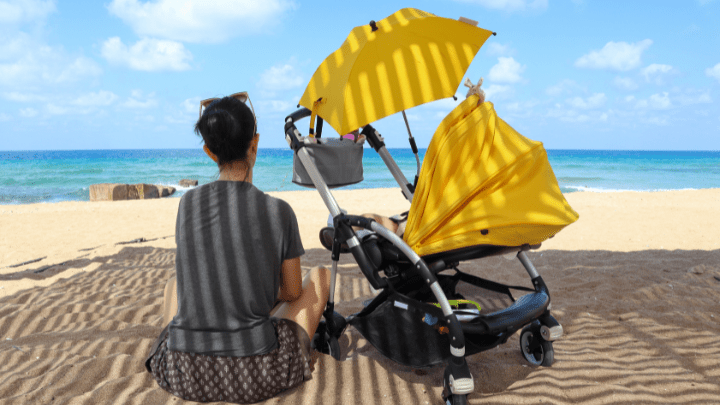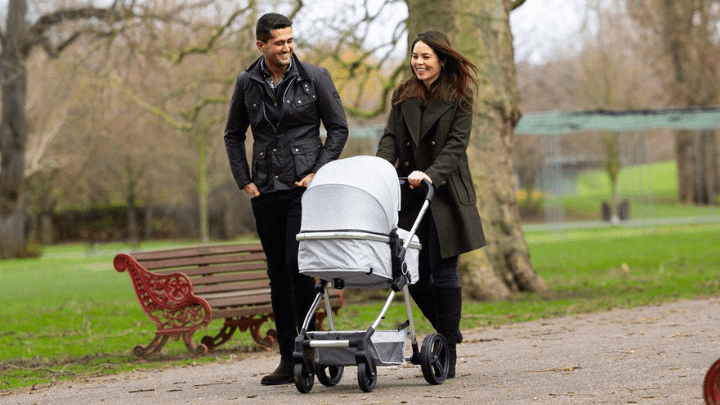Introduction
It's a love affair between you and your baby—one that requires a special connection and trust. What better way to achieve that than using a baby carrier?
There are so many options for baby carriers out there, making it hard to know which one is best for you and your little one. But don't worry, we'll give you the details on the best baby carriers available so you can make the right decision. You'll learn about different types of carriers, how to pick the right size and tips for using them safely.
Let's get started on this journey of finding the perfect carrier for your little bundle of joy.
Types of Baby Carriers: Wraps, Slings, Soft Structured Carriers, Frame Carriers
When it comes to picking the best baby carrier for your little one and you, there are several types of carriers to choose from. Generally, they can be divided into four main types: Wraps, Slings, Soft Structured Carriers, and Frame Carriers.
* **Wraps:** These are great for keeping your little one close and snug while still keeping your hands free. They come in lengths of two to four metres and can be wrapped around the body in various ways depending on the age and size of your baby.
* **Slings:** These are great for newborns as they keep them secure and also allow you to move around hands-free. Slings come in a plethora of styles, materials, sizes, and colours to suit your individual needs.
* **Soft Structured Carriers:** These are popular choice for parents on-the-go as they're lightweight yet supportive for your little one. They come with adjustable straps for a snug fit that parents can adjust quickly without taking them off.
* **Frame Carriers:** If you're looking for an all-terrain carrier that will also support a heavier baby or toddler, then frame carriers are a great option. These carriers have an internal frame which helps support more weight plus they often come with attachable accessories such as foot straps, buckles, etc., that helps keep them stable even when walking over rough terrain.
Baby wearing Positions: Front Carry, Back Carry, Hip Carry
When it comes to wearing your baby, there are three main baby wearing positions: Front Carry, Back Carry, and Hip Carry. Each offers its own set of benefits and limitations depending on your and your little one’s needs.
**Front Carry:** This position is great if you’re just starting out with baby wearing. It’s easy to achieve and can be used from birth up until around 4-5 months. Plus, it’s perfect for keeping a close eye on your baby while still freeing up your hands for other tasks!
**Back Carry:** This position is ideal if you’re looking for more mobility and a hands-free experience. It can be used once the baby has reached full head control (around 4-6 months). Keep in mind that this positioning requires some knowledge and practice before use, as well as proper safety precautions.
**Hip Carry:** This position grows with your little one—it can be used from birth all the way to toddlerhood! It gives you more mobility than Front and Back Carries, but less closeness to the baby than the former two positions.
Choosing an appropriate size and type of carrier can make a huge difference in the comfort of wearing an infant or toddler so it’s important to take into consideration both your and your little one's needs when making this decision!
Important Features to Consider: Adjustable, Padding, Head Support, Easy to Put On
Finding the right baby carrier is not a one-size-fits-all solution. It's important to look for features that will be comfortable for both you and your baby. Here are the key features to consider when selecting a baby carrier:
### Adjustable
The more adjustable the carrier, the better. Look for a carrier with straps that can be adjusted quickly, allowing you to loosen or tighten as needed. Many carriers come with additional straps that can be adjusted for added comfort and convenience.
### Padding
Look for an option with enough padding in the back and straps to help make it comfortable to wear for long periods of time. Additionally, ensure that there is sufficient padding around the waistband of your carrier so it doesn't rub or dig in as you move around.
### Head Support
If your baby is small, look for a carrier with adequate head support. Most carriers will feature some sort of neck support, but some may offer more than others which can help provide extra comfort and security for your little one.
### Easy to Put On
Look for something that is easy to put on by yourself, without needing any assistance from another person in order to get it on correctly. The last thing you want is to be struggling with your baby carrier every time you need to put it on!
Best Carriers for Newborns: Wraps and Slings
When it comes to newborns, wraps and slings are some of the best carriers you can choose for your little one. These provide a snug and secure fit for your baby, and make it easy for you to snuggle them close. They’re also great for skin-to-skin contact, providing comfort and familiarity in those early weeks.
Wrap carriers are long pieces of fabric that you wrap around yourself and your baby, holding them in place securely without putting too much pressure on their delicate bones or fragile neck muscles. Slings, meanwhile, feature a longer piece of fabric that you can adjust to fit snugly as your baby grows.
Before buying either a wrap or sling, make sure to check the size length guide on the carrier's website as different brands will have different recommendations. You'll also want to consider materials - what type of fabric do you prefer? Is it soft and breathable? And is it easy to clean? These are all key questions when choosing the best carrier for you and your little one.
Best Carriers for Infants: Soft Structured Carriers
Soft structured carriers are a great way to make sure your infant is comfortable and safe while they are being carried. These carriers provide strong support for your baby's head and neck, as well as adjustable straps that allow the carrier to remain in place while your baby grows. Many styles also include padded leg openings that will help protect against pressure points.
These carriers come in two varieties: front-facing and back-facing. Front-facing carriers typically offer the highest level of comfort for infants, as it allows you to keep an eye on them at all times. Back-facing carriers, on the other hand, are more secure and can provide more support for your baby's back. To ensure that you pick the best carrier for yourself and your little one, look for one with adjustable shoulder straps and wide seat width. That way, you can easily adjust the size of the carrier as your baby grows.
Best Carriers for Toddlers: Framed Backpack Carriers
When your little one is getting bigger, a framed backpack baby carrier may be the best option for you. This type of carrier usually supports kids from 6 months old up to 40 pounds and even beyond, so it will grow with your child. It also allows for more hip support than other carriers, making it a good choice for toddlers or for carrying heavier loads.
Framed backpack carriers feature both padded shoulder straps and a waist belt to evenly distribute weight and reduce strain on your body. The frame also supports and stabilizes the load of the child, ensuring that you are comfortable while the baby is safe and secure in the carrier.
To ensure that you are choosing the right size, always look at the manufacturers’ recommendations on weight before purchase. Many models are designed to fit both petite and plus-sized adults better, allowing you to find the most comfortable for your body.
Conclusion
Deciding which baby carrier you should buy isn't always easy, but it definitely helps to consider the type of bonding experience you want with your little one, the ease of use when it comes to putting it on and taking it off, and the overall comfort of the baby carrier. Make sure you research and read reviews from other parents to ensure you pick the best baby carrier for your lifestyle and budget.
Whether you're a new parent or an experienced one, having the right baby carrier can make all the difference in your experience. It’s important to find a baby carrier that fits your needs, and by following the steps outlined in this article you’ll be able to make an informed decision about which baby carrier is right for you and your little one.



